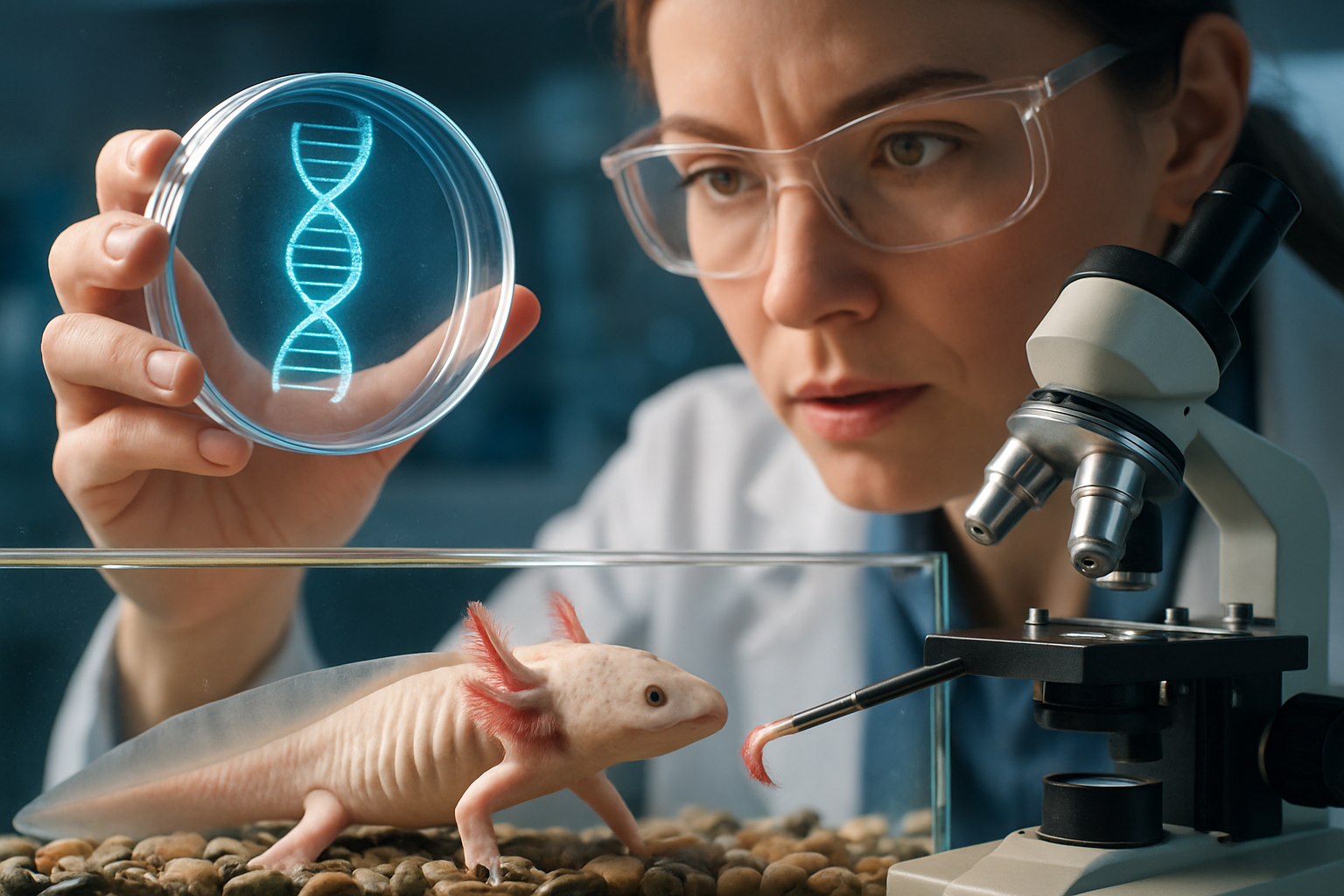Decoding the Mysterious World of Axolotl Regeneration
In the realm of fascinating creatures, few can rival the extraordinary abilities of the axolotl. These remarkable salamanders, native to Mexico, have captivated scientists and animal enthusiasts alike with their unparalleled regenerative powers. From regrowing entire limbs to repairing damaged organs, axolotls possess a biological superpower that continues to baffle and inspire researchers worldwide. Join us as we dive into the captivating world of axolotl regeneration, exploring the science behind their incredible abilities and the potential implications for human medicine.

Unlike most animals, which form scar tissue when injured, axolotls can completely regrow lost body parts without any signs of scarring. This process, known as epimorphic regeneration, allows them to rebuild complex structures with astonishing precision. The regenerated limbs are fully functional and indistinguishable from the original ones, making axolotls a subject of intense scientific interest.
The Science Behind Axolotl Regeneration
The secret to axolotl regeneration lies in their unique cellular and genetic makeup. When an axolotl loses a limb, a process called dedifferentiation occurs. This involves specialized cells at the site of injury reverting to a stem cell-like state, forming a mass of cells known as a blastema. The blastema then differentiates into the various tissues needed to rebuild the lost limb, including muscle, bone, and nerves.
Research has shown that axolotls possess several key genes that play crucial roles in their regenerative abilities. One such gene, called PAX7, is responsible for activating muscle stem cells during the regeneration process. Another gene, TGF-beta 1, helps regulate the growth and development of new tissues. Scientists have also identified specific proteins and growth factors that contribute to the axolotl’s remarkable healing powers.
Unraveling the Mysteries of Axolotl DNA
In 2018, researchers successfully sequenced the axolotl genome, revealing it to be ten times larger than the human genome. This massive genetic blueprint contains valuable information about the mechanisms behind axolotl regeneration. Scientists discovered that axolotls have a unique arrangement of genes related to limb development and regeneration, which may explain their exceptional healing abilities.
One intriguing finding is that axolotls possess multiple copies of certain genes associated with regeneration, potentially allowing for more efficient and comprehensive healing. Additionally, researchers identified genes that are active during the regeneration process but dormant in other animals, including humans. These discoveries have opened up new avenues for understanding and potentially harnessing regenerative capabilities in other species.
Implications for Human Medicine and Regenerative Therapies
The study of axolotl regeneration holds immense promise for the field of regenerative medicine. By understanding the cellular and genetic mechanisms that enable axolotls to regrow lost body parts, scientists hope to develop new therapies for human tissue repair and organ regeneration. This could potentially revolutionize treatments for a wide range of conditions, from spinal cord injuries to heart disease.
One area of particular interest is the regeneration of nervous tissue. Axolotls can repair and regrow damaged nerves, a feat that is currently impossible in humans. Researchers are exploring ways to apply the principles of axolotl nerve regeneration to develop treatments for neurological disorders and injuries. While we are still far from achieving human limb regeneration, the insights gained from axolotl studies are paving the way for exciting advancements in regenerative medicine.
Conservation Efforts and the Future of Axolotl Research
As fascinating as axolotls are, they face a dire situation in their natural habitat. Pollution, urbanization, and the introduction of invasive species have pushed wild axolotls to the brink of extinction. Conservation efforts are underway to protect and restore their native ecosystem, but the species remains critically endangered.
Fortunately, axolotls have thrived in captivity, with a robust population maintained in research laboratories and among exotic pet enthusiasts. The pet trade has played a significant role in preserving axolotl genetic diversity, with captive-bred specimens available for around $20 to $70, depending on their color morph and age. However, it’s crucial to note that axolotls require specialized care and are not suitable pets for everyone.
As research into axolotl regeneration continues, scientists are working to develop new tools and techniques for studying these remarkable creatures. Advanced imaging technologies and genetic manipulation methods are providing unprecedented insights into the cellular and molecular processes underlying regeneration. With ongoing conservation efforts and scientific advancements, the hope is that axolotls will continue to inspire and inform the field of regenerative medicine for years to come.
In conclusion, the axolotl’s extraordinary regenerative abilities represent one of nature’s most fascinating phenomena. As we continue to unravel the mysteries of their unique biology, we edge closer to unlocking the potential for human tissue regeneration. The journey from understanding axolotl limb regrowth to developing revolutionary medical treatments is long and complex, but the promise it holds for improving human health and quality of life is truly extraordinary. The humble axolotl, with its perpetual smile and incredible healing powers, stands as a testament to the wonders of the natural world and the boundless possibilities of scientific discovery.





